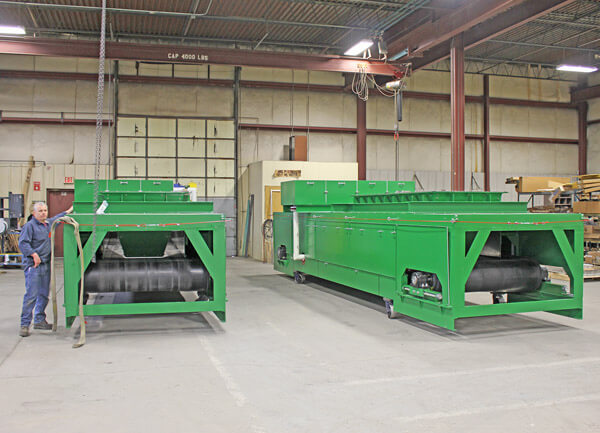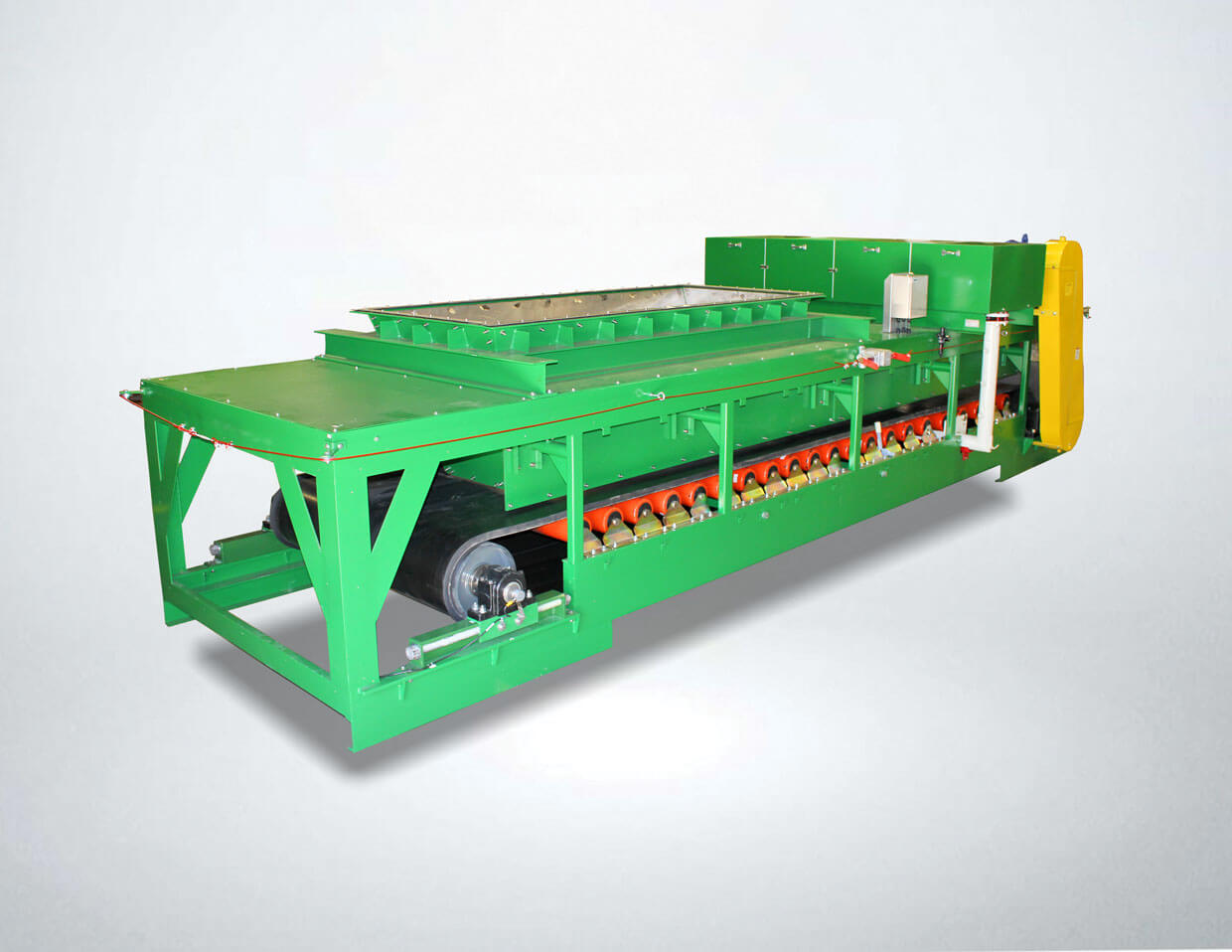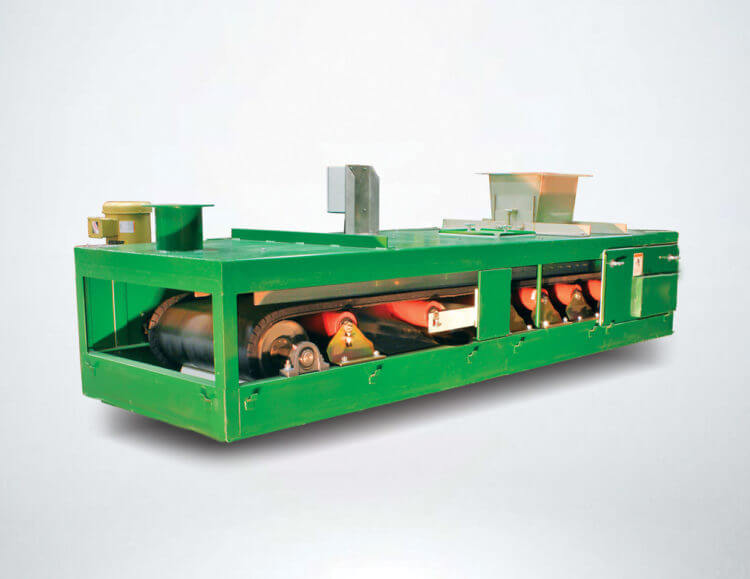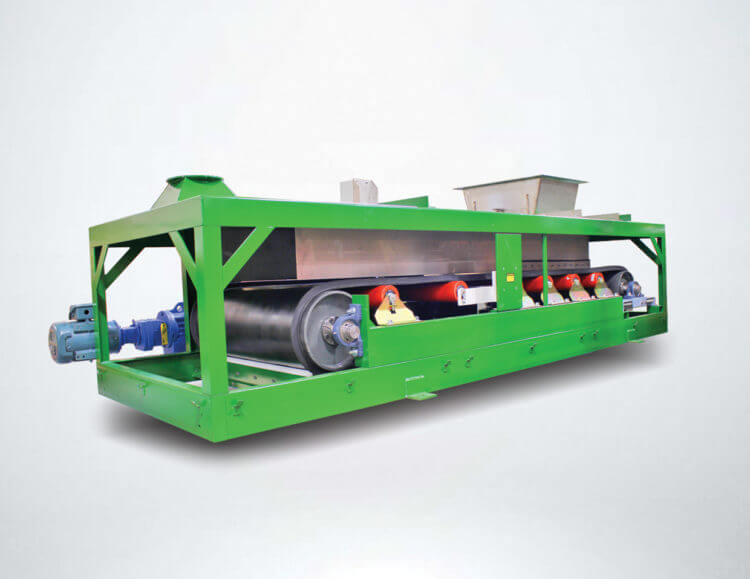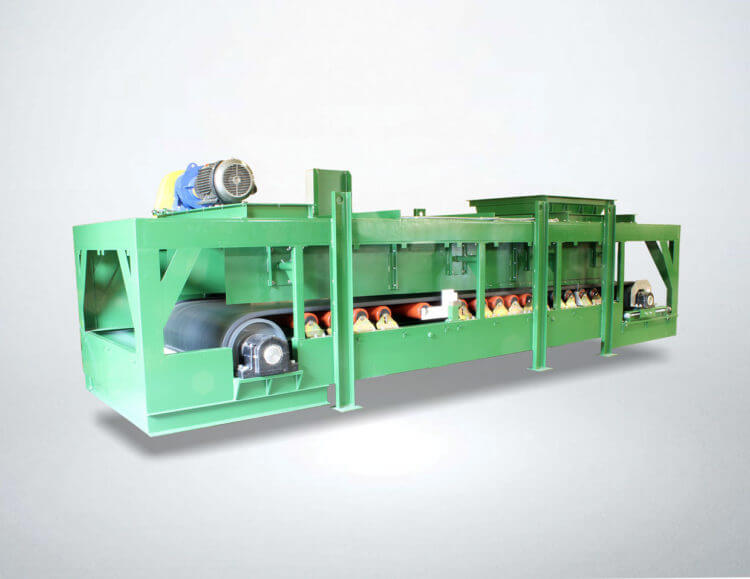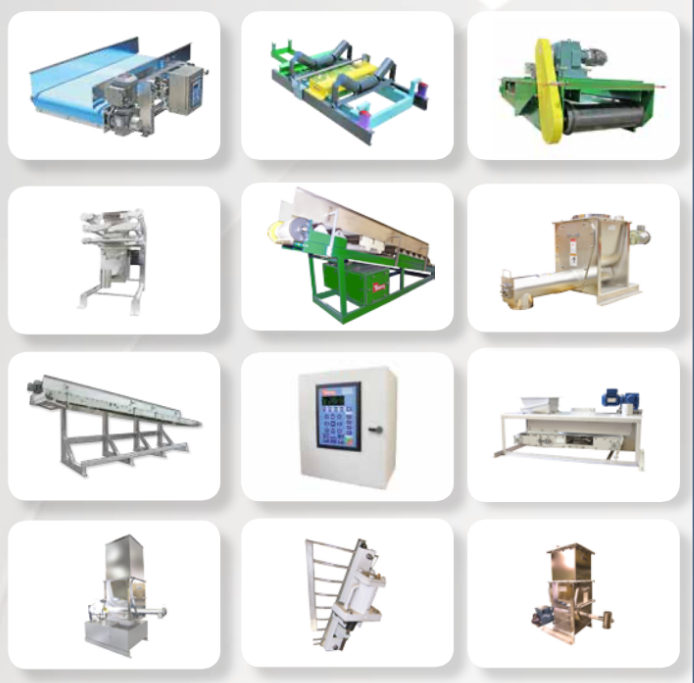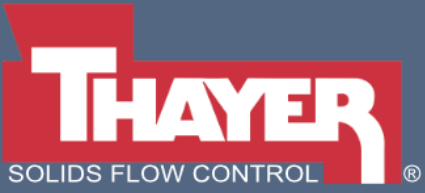Description
MH HEAVY INDUSTRY WEIGH BELT
First designed for coal fired power plants and steel mill service to feed coal, limestone, mill scale, dolomite, iron ore pellets, fluorspar and coke, the Model “MH” has been subjected to extreme environmental conditions-such as abrasive dusts, corrosive fumes, wide temperature fluctuations and vibrations-without any detrimental effects on performance or accuracy. Its rugged construction coupled with the most advanced electronic controls make it truly THE WORLD’S MOST RELIABLE WEIGH FEEDER.
Secondary Lever System

Features
- Single or multiple vertically suspended weigh idler
Measures only vertical forces-therefore is not affected by changes in idler friction - Minimum area for material build-up
- Force aligned to totally eliminate the effects or changes in belt tension caused by material head loading or belt tracking adjustments
- Weight transducer is located out of material handling area and not affected by dust, corrosion or heat produced by the material
- Weight sensing lever system is a summing lever so that the load (weight) is measured accurately, regardless of belt tracking or load position
- Weight sensing system is totally enclosed and requires no maintenance
- Weight signal represents only material load; the dead load (belt & idler) is completely mass counter-balanced
Slack belt design for more stable accuracy
The MH belt is driven from the head pulley located at the outlet end of the feeder, rather than the tail pulley located at the end inlet. This permits lower belt tension during operation for better sensitivity and more stable accuracy. The head pulley is crowned to prevent belt tracking problems and is sheathed in rubber lagging to prevent belt slippage.
Inlet dimensions custom tailored
Ensures uniform with-drawl of material from storage. Very careful consideration is given to density, particle size and handling characteristics of your material.
Speed sensor mounted at idling tail pulley
Measures the true speed of the belt via rotation of the idling pulley, not an inferred belt speed based on motor speed. Belt slippage or breakage is immediately detected because the idling pulley stops rotating.
High accuracy, rugged measurement system
100% of the scale’s capacity is used to weigh material. Dead weight of the weigh idler and belt is mass-counterbalanced, thus providing excellent resolution and a high signal to noise ratio. Thayer Scale’s rugged load cell design assures reliable and accurate performance for the life of the weigh feeder.
Screw adjustable idler alignment
The idlers adjacent to the weigh idler are mounted on jacks for easy alignment in the field. All idlers are mounted on individual CEMA brackets, permitting removal to either side without major framework disassembly or belt removal.
Full length adjustable skirt boards
Tapered and flared from the inlet to the discharge to prevent pinching of material between the skirt and the belt. Skirt boards are located inside the belt flanges to provide two barriers to contain material and prevent spillage.
Automatic calibration
Thayer Scale’s optional automatic test weight mechanism (ATWL) provides a means for applying a precision test weight to allow completely automatic calibration. This represents one of the the greatest man-hour savings and performance assurance features available. On large weighbelt systems, like the MH, the ATWL eliminates the need to store and transport multiple, heavy weights to perform regular calibration. In addition, the precision placement of the test weight is performed automatically, eliminating the possibility of misapplying the weight. The calibration sequence can be initiated via the weigh belt instrument keypad or via a contact closure. The need for test chains is eliminated.
THAYER FLEXURE SUSPENSION SCALE
The Basic THAYER Flexure Suspension system utilizes a series of steel flexure plates to transmit gravimetric loads vertically from the load receiving element through levers to the specifically selected controls. The combination of mass counterbalancing against tare loads, frictionless flexure-mounted levers and a high resolution transducer produces a force measuring system beyond compare. Of significance is the fact that infinite weighments may be made without maintenance or calibration, regardless of atmospheric or factory conditions. In many instances, THAYER Flexure Suspension Systems placed in operation in 1950 are still working without maintenance or adjustment.
Secondary Lever System
